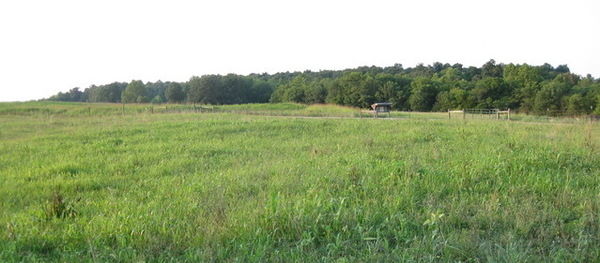The Story of the Land
Posted on April 1, 2020, by Joy Jensen SL

Photo by Donna Mattingly
This is the story of the land that was to become a new Loretto. In 1785 Basil Hayden led 20 families from St. Mary’s County in Maryland to their land grant in central Kentucky. The grant was located at the headwaters of a creek, later named Pottinger’s Creek. The Catholic families soon learned that the soil was far from the best. The area was partly a meadow of canebrakes (native bamboo) and a forest of tulip, poplar, oak, walnut, and maple. White-tailed deer grazed on grasses at the forest edges. Bison traveled well-worn traces to feed on the canebrakes.
Land grants could be filed for as much as 5,000 acres. A grant could then be subdivided into smaller tracts, limited by the ability of the buyer’s paying capacity. A patent for 200-400 acres was common for an individual farm. Roads were simple trails through the forest. The Catholics had formed a colonization league to settle close together in Kentucky, both for the sake of the services of a priest and for protection from Native Peoples. The Shawnee and the Cherokee Peoples did not inhabit Kentucky but used the land for hunting, and fought to keep it.
A number of Maryland Catholic groups settled in the Rolling Fork area. Hayden’s group settled on Pottinger’s Creek in the shadow of Rohan’s Knob. The usual settlement pattern was for several related families to settle string-like fashion along a creek. In 1786 Edward and Charles Beaven, the four Cissell brothers –– Matthew, Zachariah, Sylvester and Jeremiah –– and the three Mattingly brothers settled on Hardin’s Creek. Philip Miles and his brother-in-law Thomas Hill in 1787 led a group to settle on Cartwright Creek, 8 miles in the other direction from Pottinger Creek. Another settlement on the Rolling Fork was established by Robert Abell in 1788. His brother-in-law Benedict Spalding arrived in 1790 with more families. By 1790 the area was pretty well settled. There were now about 300 Catholic families in several settlements. Native Peoples no longer troubled the settlers by 1792 when Kentucky became a state.
It was not until the arrival of Stephen T. Badin in 1794 that the Maryland Catholics had the regular services of a priest; he was newly ordained and only 25 years old. Badin would spend most of his time riding between settlements to say Mass at different homes. He chose as his permanent home a location near Pottinger Creek because it was centrally located among the several settlements. Badin purchased a 200-acre tract of land from Basil Hayden for £175. This is the first chapter in the story of the land that was to become a new Loretto.
Sources: W.J. Howlett, Life of Charles Nerinckx; Camillus P. Maes, Life of Charles Nerinckx; Ben. J. Webb, Catholicity in Kentucky
